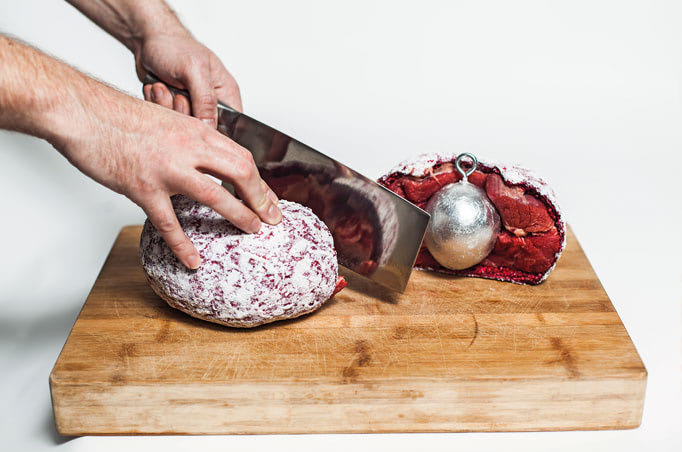Many people dismiss lab-grown meat as slick, soulless and completely artificial. Slow-food enthusiasts and organic-only eaters feel uncomfortable dining on a food that seems utterly divorced from centuries of traditional farming and cooking. In response to these concerns, rustic in vitro bioreactors bring artisanal production methods back to cultured meats. The shapes of these bioreactors recall primal cuts of beef or whole Spanish hams. As the meat grows over the course of several months, it develops deep, complex flavors that range from black truffle to oak. The longer rustic in vitro is left to ripen, the more character the replicating cells acquire.
Cantaloupe Gazpacho
1 small cantaloupe
4 tomatoes
2 tablespoons chopped red onion
Juice of one lemon
120 milliliters extra virgin olive oil
6 strips of rustic in vitro meat, jamón iberico style
Salt and pepper
1. Scoop the cantaloupe from its peel, and remove all the seeds. Peel the tomatoes and cut them into quarters. Put the cantaloupe, tomatoes, red onion and lemon in a blender and process until extremely smooth.
2. With the motor still running, drizzle in the olive oil. Season the soup taste with salt and pepper, and chill in the refrigerator.
4. While the gazpacho is chilling, fry the rustic in vitro in a pan until crispy.
5. When completely chilled, divide the gazpacho into six bowls. Crumble one strip of rustic in vitro into each bowl as a garnish.
From The In Vitro Meat Cookbook: 45 lab grown meat dishes you cannot cook yet.

Share your thoughts and join the technology debate!
Be the first to comment